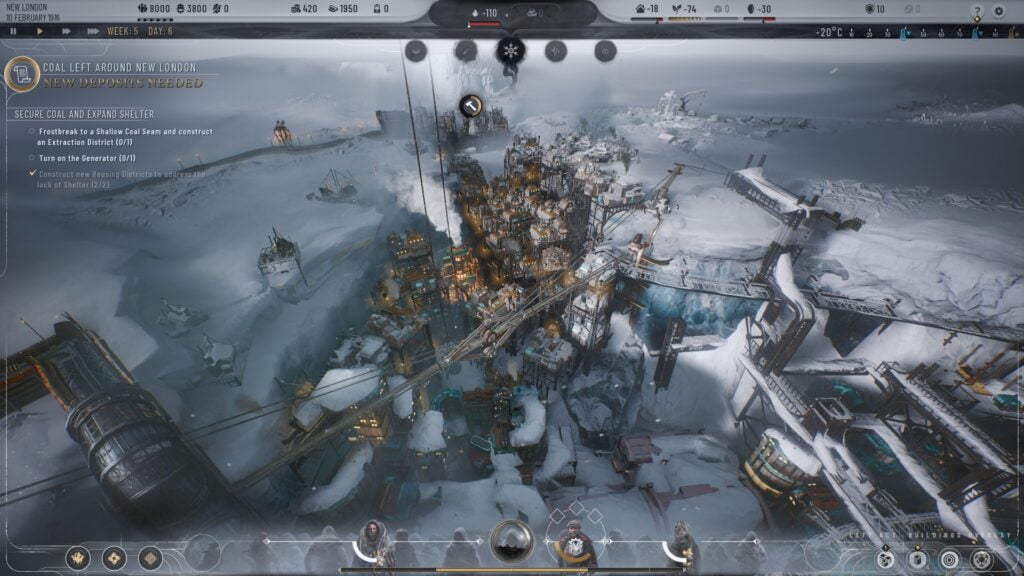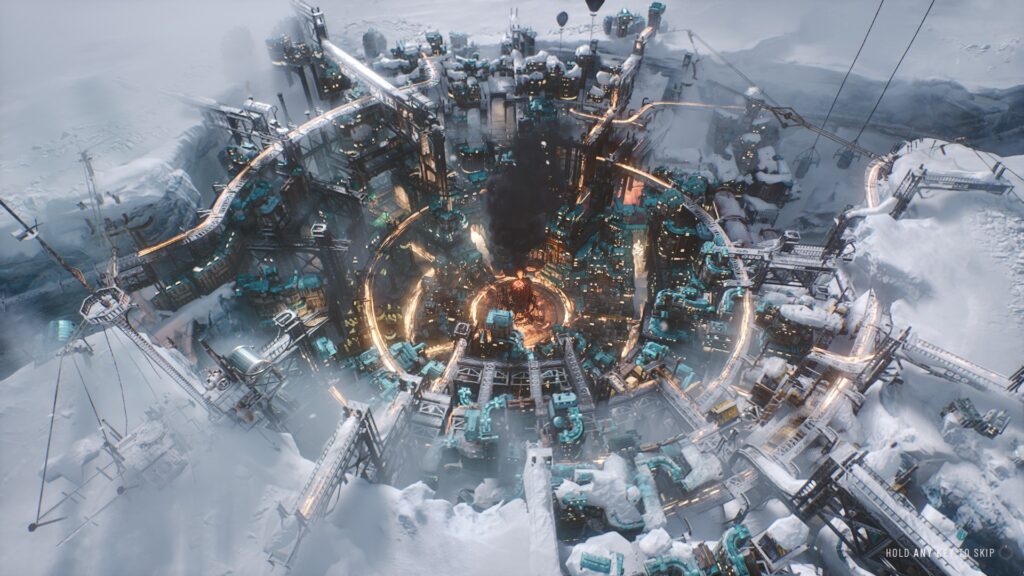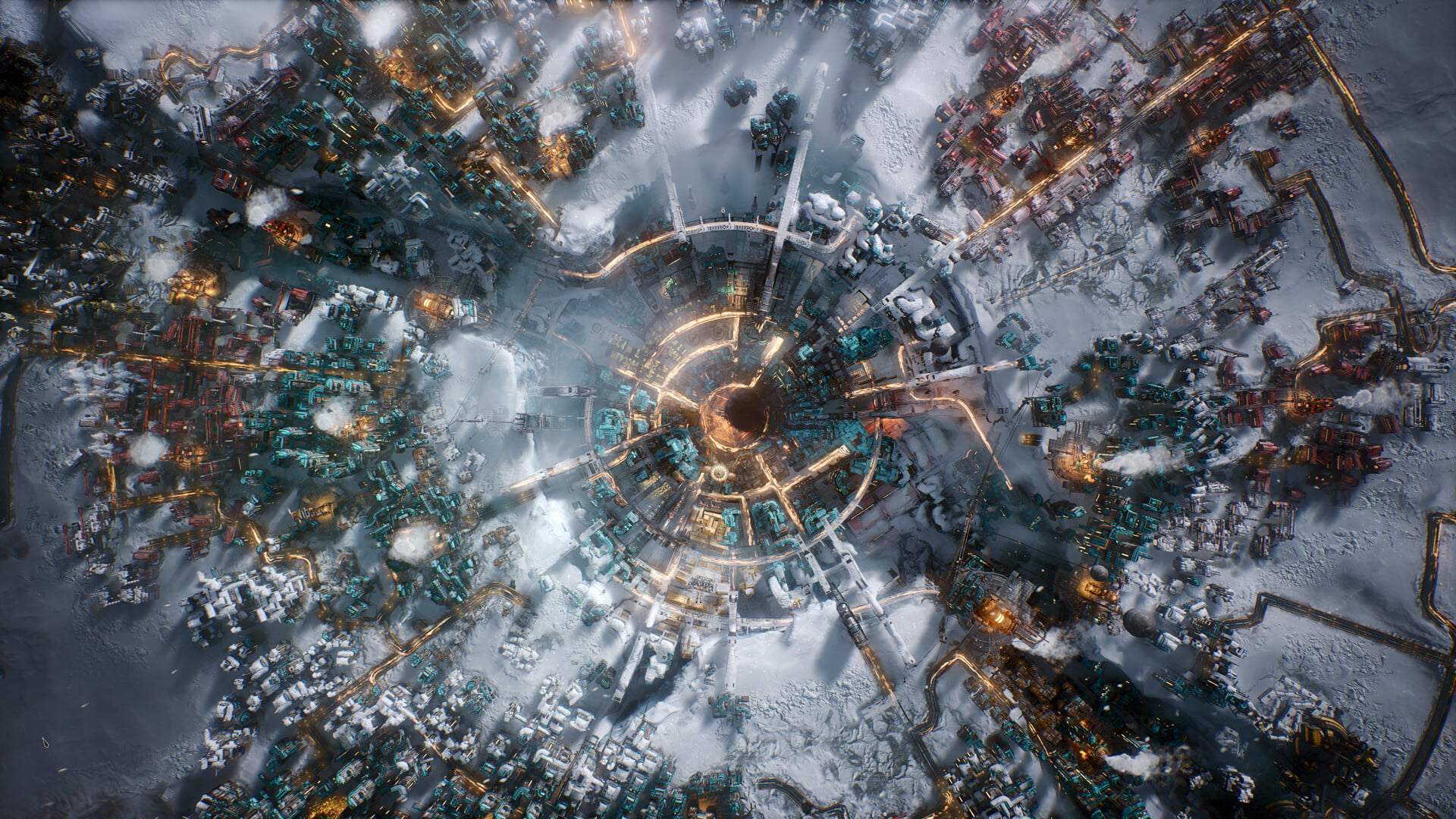The original Frostpunk was met with acclaim when it was released back in 2018. Set in an alternate universe where volcanic eruptions brought about a global ice age, it was an innovative mix of city management and survival game, but the survival here being the continuation of any human civilization in the face of devastating sub-zero temperatures. There were no easy solutions and much like 11 Bit Studios other games like This War is Mine, it was a bleak tale about survival in a desperate situation.
Now six years later, Frostpunk 2 is set 30 years after the events of the first game, following the citizens of New London as they search for ways not just to survive, but thrive. The Captain, the player-character from the first game, has now died, and you assume the role of The Steward, the new leader of New London who has to contend with a variety of new challenges for the city. After a short tutorial level, you’re let loose with the aim of finding a new source of fuel to power the generator, since the coal supply is running out.
The Frostpunk universe is set following the concurrent eruptions of Krakatoa and Mount Tambora, which caused an enormous volcanic winter without end. Set within what was once the United Kingdom in 1886, in the first game you built New London into a somewhat livable metropolis, through somewhat of an iron fist. In this game, it’s 1916 and you have to contend with new factions of the citizenry, as well as the Council, the elected assembly of New London which passes various laws governing the populace.

Whereas in the first game you focused primarily on constructing individual buildings within the city, now the core is already established and instead, you need to build districts in an almost SimCity manner, spreading out from the central Generator, which you must keep powered at all times so that the city has enough heat to survive the bitter cold. Residential districts are where people live, food districts produce rations for the citizens, and extraction districts can mine particular resources, be it coal, prefabs or materials. Each of these is then used to build or research different things.
This being a narrative-driven strategy game, there will be a core mission objective as you progress through the main story, starting off with having to secure a more permanent source of fuel compared to coal. This involves researching and unlocking knowledge of petroleum, among many other investigations. At the same time you have a variety of side objectives given to you by the various factions of citizens, alongside your overriding core necessities: Keep people housed, give them enough food, and keep the generator running. Passing laws can grant various bonuses which will help you to expand, or restrict resource usage.

The game has an excellently escalating sense of desperation that gradually and relentlessly builds. First off you’re worried about not having enough people to run all of your districts and manufacturer resources, and you want your population to grow so that you can expand. But later on, you’ll be more worried about surviving as hundreds die every month by freezing to death. Juggling the competing demands of the different citizen factions; the New Londoners, the Frostlanders and the Stalwarts gets more and more complicated as in order to vote for your policies on the council, you’ll need to promise them various different things and will get upset if you fail to deliver.
Aesthetically the game heavily reminds me of the film and TV series Snowpiercer, but also the Mortal Engines series of books (the first book of which was made recently into a poor feature film). There is a real steampunk style, perhaps as the name was expected, but more fantastical, with walking automations and a tram system which will shuttle people around the various districts of the city and naturalistically spreads out from the central hub and the generator. Graphically it’s definitely improved from the first game, with the swirling snow and the larger scale of the map giving an excellent sense of isolation, despite how large New London can grow.

Frostpunk 2 takes the relatively straightforward ideas of the original game and expands them further, adding various new concepts while keeping the central narrative as engaging and desperate as ever. The Utopia Builder mode is a highly demanded feature, which is an open-ended scenario builder where you can simply construct a city without having to worry about missions or a narrative, and without any specific time constraints. There’s a good variety of different maps and locations, but it’s absolutely recommended to play the main campaign first before trying out that mode.
In the original Frostpunk, the scale felt smaller and more self-contained, establishing New London as a viable community. In Frostpunk 2, you attempt to establish a new civilization, and your perseverance against the elements will decide whether this is achievable, or futile raging against the dying of the light.





